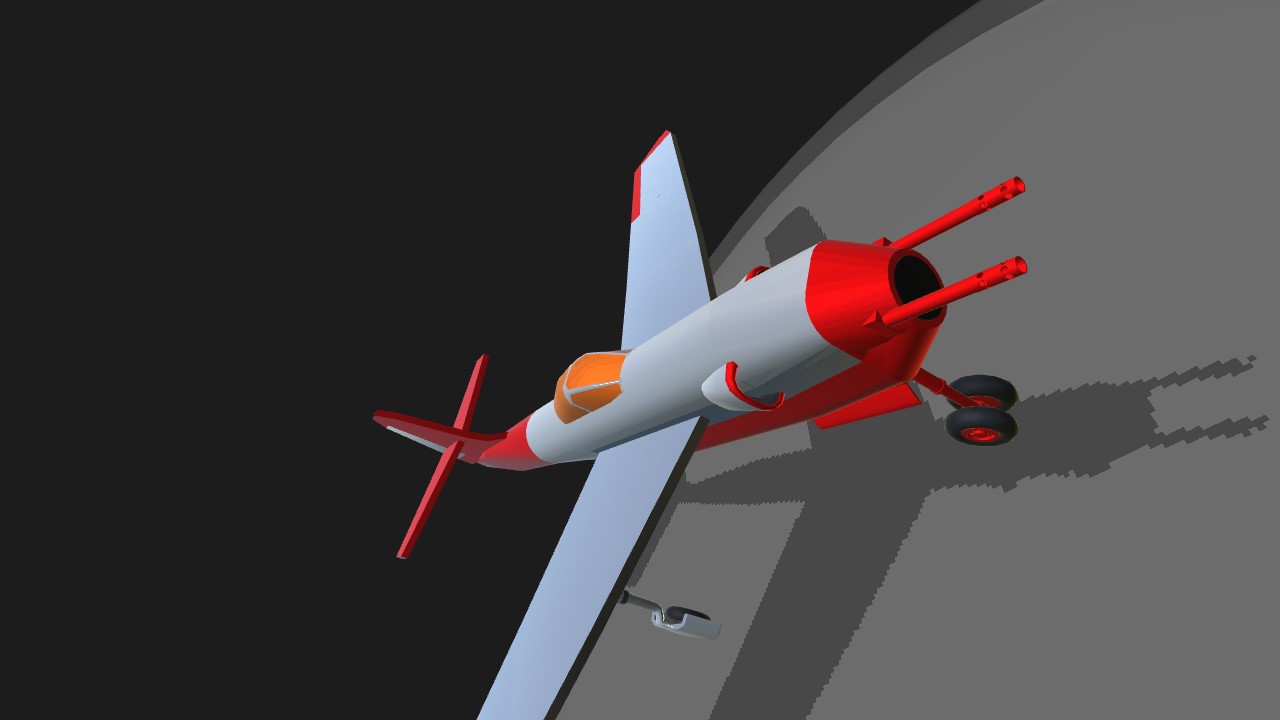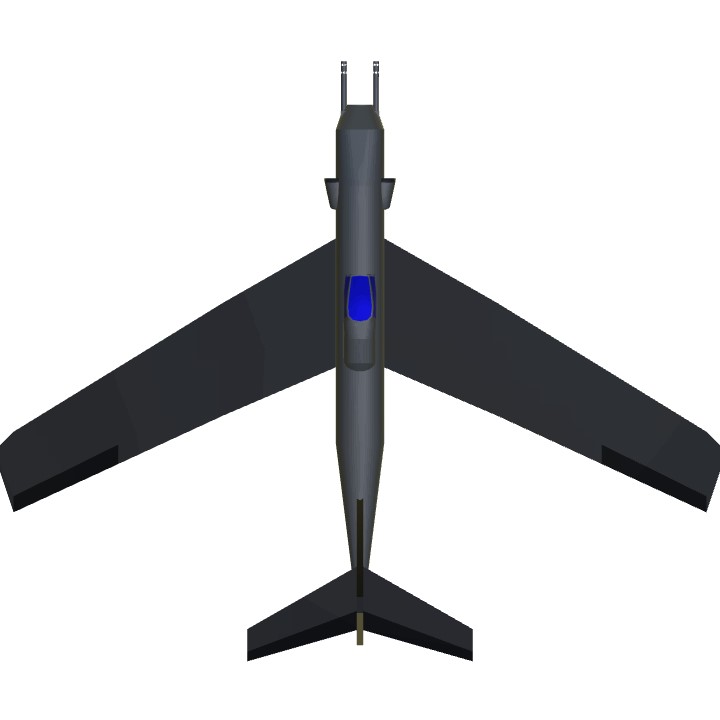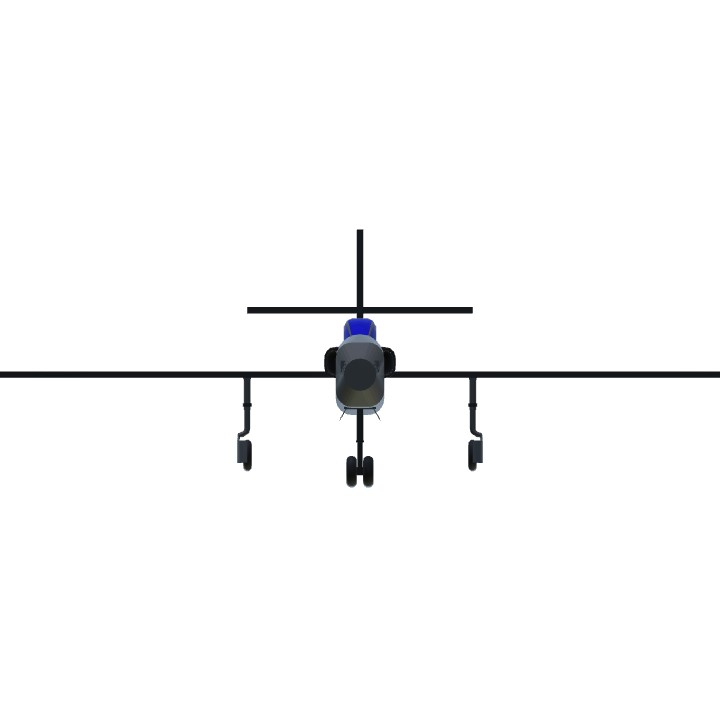Crap! Forgot the description!!! 4 hours later...heheheh, we all make mistakes, anyway, this is my attempt at creating the Lavochkin La-160, it flies pretty well! Sturdy plane, for some reason no matter how make inlets I put on this thing it keeps saying that it's not reviving enough air so, I really don't know.
---Information (from Wikipedia)---
The Lavochkin La-160, known as Strelka(Arrow), was the first Soviet swept winged jet fighter research prototype. It was designed and manufactured by the Lavochkin Design Bureau from 1946. USAF reporting name - Type 6
Aircraft 160 was an all-metal pod and boom style aircraft with tri-cycle undercarriage like the Lavochkin La-152 but its mid set wings incorporated 35o sweep at 1/4 chord. The afterburning engine was underslung in the nose with the air intake at the extreme nose, and exhaust under the rear fuselage. The tri-cycle undercarriage was housed entirely within the fuselage, (almost all Lavochkin jet aircraft had a similar undercarriage arrangement) when retracted allowing the wing to be built thinner and lighter. A conventional tail layout with 35o swept tailplane was located at the end of the tail boom. The swept wings were of very low taper (almost constant chord)with 1/2 span flaps/ailerons and two wing fences each side.
Although designed as a fighter, Aircraft 160 was intended for research into high speed swept-wing flight, of which little was known in the mid-1940s. Following closely the layout of his previous jet fighter prototypes Lavochkin was able to produce an aircraft capable of providing useful data and experience of high speed flight near the speed of sound.
The first flight was on 24 June 1947. Successful flight trials were quickly followed by public display at the 1947 Aviation Day airshow at Tushino. Trials continued until Aircraft 160 broke up in flight, due to wing flutter, during tests to establish the maximum attainable speed. The experience gained with Aircraft 160 spurred on Soviet aircraft designers to design swept winged fighters, albeit cautiously.
The title 'Aircraft 160' was used previously by Lavochkin for a 'Heavy' twin engined fighter to be produced concurrently with Aircraft 150. This project was still-born, but led to the Alekseyev twin-engined I-21 series of fighters, after Alekseyev left Lavochkin's design bureau to head OKB-21 at Gor'kiy.
Specifications
General Characteristics
- Predecessor Yakovlev Yak-23
- Created On iOS
- Wingspan 36.6ft (11.2m)
- Length 30.4ft (9.3m)
- Height 13.0ft (4.0m)
- Empty Weight 2,755lbs (1,250kg)
- Loaded Weight 6,476lbs (2,937kg)
Performance
- Power/Weight Ratio 0.52
- Wing Loading 27.8lbs/ft2 (135.8kg/m2)
- Wing Area 232.8ft2 (21.6m2)
- Drag Points 1835
Parts
- Number of Parts 48
- Control Surfaces 6
- Performance Cost 247






